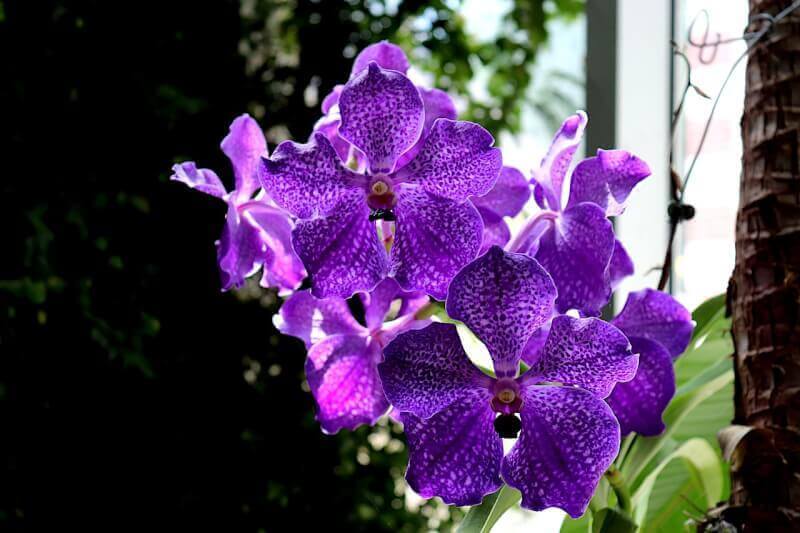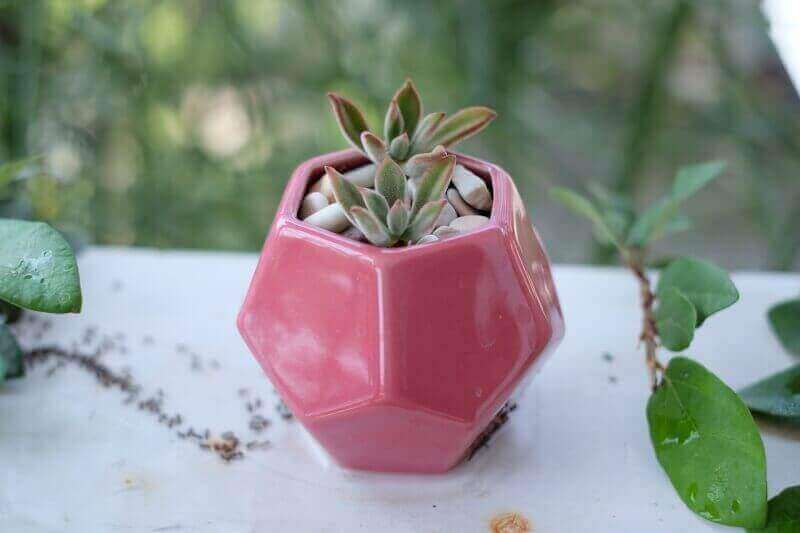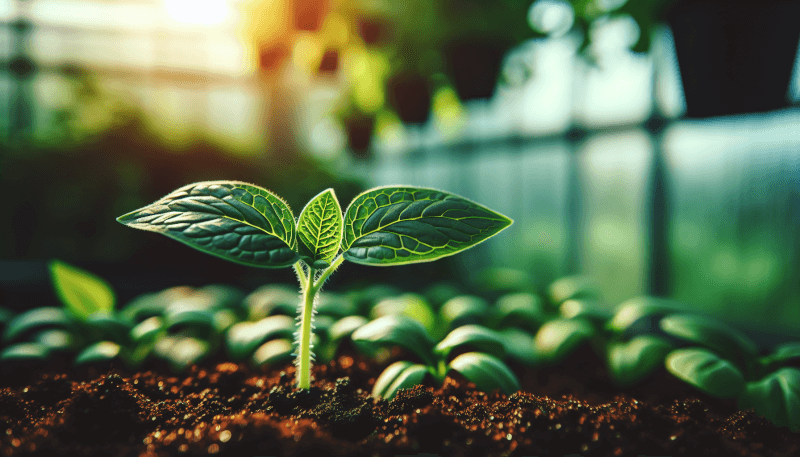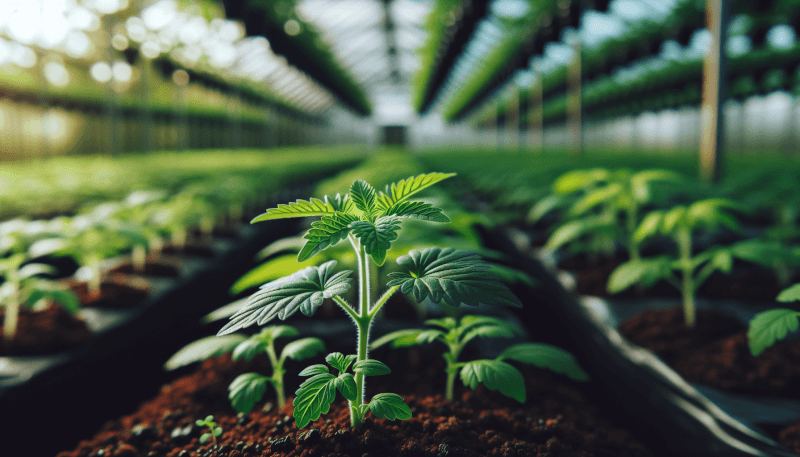👋 Click the mic button to talk to Alfred, the Todd's Seeds Gardening/Sprouting Expert – Feel free to ask him anything!
Ask Virtual Todd Anything - Click the Mic
Imagine stepping into a lush oasis of greenery, vibrant flowers, and the delicate scent of blooming plants. At Growing Seeds Greenhouse, you will experience just that – a captivating world of nature’s wonders. From seedlings to full-grown plants, this greenhouse is a haven for both gardening enthusiasts and those simply seeking a moment of tranquility amidst the bustling city. With a commitment to sustainable practices, Growing Seeds Greenhouse is not only a place to appreciate the beauty of nature, but also an opportunity to contribute to a greener and more eco-friendly world. Come and immerse yourself in the magical realm of Growing Seeds Greenhouse and let your love for plants bloom.
Greenhouse Benefits
Extended Growing Season
Having a greenhouse provides you with the opportunity to extend your growing season and enjoy fresh produce all year round. With a greenhouse, you can start planting earlier in the spring and continue growing vegetables and fruits well into the fall or even winter months. This means you can harvest crops that would otherwise be impossible to grow in your region during certain times of the year.
Protection from Extreme Weather
Extreme weather conditions such as frost, hail, heavy rains, and strong winds can wreak havoc on your plants. However, when you have a greenhouse, you provide a protective shelter for your crops. The structure of the greenhouse shields your plants from these harsh elements, ensuring their survival and reducing the risk of crop loss. This protection is especially crucial in regions with unpredictable weather patterns.
Pest and Disease Control
One of the biggest challenges for any gardener is dealing with pests and diseases that can damage or even destroy your plants. By growing your plants in a controlled environment like a greenhouse, you have a better chance of preventing and managing these issues. The physical barrier of the greenhouse helps keep pests out, reducing the need for chemical pesticides. Additionally, the controlled environment allows you to carefully monitor and address any potential disease outbreaks before they become significant problems.
Controlled Environment for Optimal Growth
A greenhouse gives you the ability to create an ideal environment for your plants. You can control factors like temperature, humidity, and light exposure, providing your plants with optimal growing conditions. This allows you to grow a wider variety of plants that may require specific climate conditions. With the ability to tailor the environment to each plant’s needs, you can maximize their growth potential and achieve higher yields.
Choosing the Right Greenhouse
Consider Size and Space
Before selecting a greenhouse, it’s essential to consider the available space you have and the size of the structure you need. Think about what you plan to grow and how much space each plant will require. Take into account your future gardening aspirations and allow some room for expansion. It’s always better to have a greenhouse that is slightly larger than what you initially need rather than regretting having insufficient space later on.
Material Selection
When choosing a greenhouse, consider the materials used in its construction. Common choices include glass, polycarbonate, and polyethylene. Each material has its advantages and disadvantages. Glass provides excellent light transmission and is long-lasting but can be more expensive. Polycarbonate is durable, lightweight, and provides good insulation but may yellow over time. Polyethylene is affordable and easy to install but may not be as long-lasting as the other options. Consider your budget, climate, and specific needs when deciding on the material.
Reputation and Reviews
Before purchasing a greenhouse, research different brands and models. Look for reputable manufacturers that have positive customer reviews and a good track record. Reviews from other greenhouse owners can provide valuable insights into the quality, durability, and ease of use of a particular product. Don’t be afraid to reach out to other greenhouse enthusiasts for advice and recommendations.
Budget and Cost
Greenhouse prices can vary significantly depending on the size, material, and additional features. Determine your budget and how much you are willing to spend on a greenhouse. Keep in mind that investing in a higher-quality greenhouse may be more expensive initially but can save you money in the long run due to its durability and efficient performance. Consider the cost of ongoing maintenance, such as heating and cooling, when calculating your overall budget.

Preparing the Greenhouse Site
Selecting the Location
Choosing the right location for your greenhouse is crucial for its success. Look for a spot that receives ample sunlight throughout the day. A southern or southeastern exposure is generally ideal as it maximizes the amount of sunlight your plants will receive. Avoid areas that are shaded by trees or buildings. Also, consider the accessibility of the location and make sure it’s convenient for watering, maintenance, and transporting supplies.
Clearing and Leveling the Site
Before installing your greenhouse, ensure that the site is clear of any debris, rocks, or vegetation. Clearing the site prevents interference with the greenhouse’s foundation and allows for proper drainage. Additionally, it’s important to level the site to provide a stable and even surface for the greenhouse structure. Uneven terrain can lead to stability issues and potential damage to your greenhouse.
Foundation and Drainage
A solid foundation is essential for the stability and longevity of your greenhouse. The type of foundation you choose will depend on the size, weight, and structure of your greenhouse. Common options include concrete slabs, gravel, and pressure-treated wood. Ensure the foundation is level and properly anchored to the ground.
Proper drainage is another critical factor for greenhouse health. Install a French drain or perimeter drain around the greenhouse to redirect excess water away from the structure. This prevents water from pooling around the greenhouse, which can lead to root rot and other plant diseases.
Utilities and Access
Consider the utilities and access points needed for your greenhouse. You may require electricity for lighting, heating, or ventilation systems. Ensure that an electrical source is easily accessible. Water access is also important for irrigation purposes. Additionally, plan for easy entry and exit points to the greenhouse for transporting supplies and moving plants in and out.
Structural Considerations
Frame Types
Greenhouse frames come in various materials, with the most common being aluminum and galvanized steel. Aluminum is lightweight, corrosion-resistant, and requires minimal maintenance. Galvanized steel is more robust and suitable for larger, heavy-duty greenhouse structures. Consider the specific needs of your greenhouse and the climate conditions in your area when selecting the frame material.
Roofing Options
The roof of your greenhouse is essential for regulating light transmission, insulation, and water runoff. Common roofing materials include glass, polycarbonate panels, and polyethylene film. Glass provides excellent light transmission but can be more expensive and require additional structural support. Polycarbonate panels are lightweight, durable, and offer good insulation properties. Polyethylene film is affordable, lightweight, and easy to install but may need replacement more frequently. Choose a roofing material that suits your budget, climate, and desired performance.
Ventilation Systems
Proper ventilation is crucial for maintaining a healthy greenhouse environment. It helps regulate temperature, humidity levels, and air circulation. Consider installing vents, louvers, or fans to promote air exchange. Automatic ventilation systems that are triggered by temperature or humidity sensors can help automate the process and ensure optimal conditions for your plants.
Heating and Insulation
If you plan on growing plants year-round, you will likely need a heating system to provide warmth during colder months. Options include electric heaters, gas heaters, or even a wood-burning stove in some cases. Insulation is also vital to retain heat and prevent temperature fluctuations. Insulating materials such as bubble wrap, thermal curtains, or double-pane glass can help improve energy efficiency and maintain a stable environment.

Choosing and Preparing Growing Medium
Soil vs. Soilless Mixes
The choice of growing medium depends on the plants you plan to grow and your preferred growing methods. Soil-based mixes are suitable for traditional gardening, while soilless mixes like coco coir, perlite, or peat moss are commonly used in hydroponic or container gardening. Consider the specific needs of your plants and the required drainage and water-holding capacities when selecting a growing medium.
Sterilization and Pest Control
Before using any growing medium, it’s essential to sterilize it to eliminate weed seeds, harmful pathogens, and pests. Sterilization can be done through pasteurization, solarization, or using steam. Additionally, implement proper pest control measures to prevent infestations in your greenhouse. This may include regular monitoring, introducing beneficial insects, or using organic pest control products when necessary.
Moisture Retention and Drainage
A balanced mixture of moisture retention and drainage is critical to the health of your plants. The growing medium should hold enough water to sustain the plants but also allow excess water to drain away to prevent waterlogging and root rot. Choosing a growing medium with good water-holding capacity, along with the proper use of drainage materials and containers, ensures optimal moisture control.
Nutrient Enrichment
To ensure your plants receive the necessary nutrients for healthy growth, consider enriching your growing medium with organic matter or using fertilizers. Compost, manure, or organic fertilizers can help replenish nutrients over time. If you opt for hydroponic or soilless growing methods, nutrient solutions can be precisely tailored to meet the specific needs of your plants.
Seed Selection and Starting
Choosing Seeds for the Greenhouse
Selecting the right seeds is crucial for successful greenhouse gardening. Consider the climate conditions in your area and choose seeds that are suitable for greenhouse cultivation. Look for varieties that have shorter maturity times, are more resistant to diseases, or thrive in controlled environments. Seed catalogs or reputable seed suppliers can provide valuable information on suitable greenhouse varieties.
Germination Techniques
Proper germination is essential for seedling development. Follow the instructions provided by the seed supplier for the specific germination requirements of each seed type. Some common germination techniques include direct sowing, presoaking, scarification, or stratification. Providing consistent moisture, temperature, and light conditions during the germination process are key factors for successful seed starting.
Seed Starting Containers
Choose appropriate containers for starting your seeds. Options include peat pots, plastic cells, seed trays, or even homemade containers using recycled materials. Consider the size and depth of the containers based on the specific seedling’s root system and growth requirements. Ensure the containers have proper drainage holes to prevent water stagnation.
Providing Adequate Lighting
Since natural sunlight may vary in intensity and duration, providing supplemental artificial lighting is often necessary for optimal growth. Grow lights, such as fluorescent, LED, or high-intensity discharge (HID) lamps, can help ensure plants receive sufficient light energy for photosynthesis. Position the lights at the appropriate distance from the seedlings to avoid heat stress, and adjust the lighting duration based on the specific requirements of each plant species.

Watering and Irrigation
Determining Watering Needs
Watering requirements can vary depending on the plant species, stage of growth, temperature, humidity, and other environmental factors. Avoid overwatering or underwatering your plants by monitoring the soil moisture levels regularly. Different plants have different water needs, so it’s important to research and understand the specific requirements of each plant you are growing.
Irrigation Systems
Choosing the right irrigation system can help streamline your watering process and ensure water is delivered efficiently to your plants. Options include hand-watering with a watering can or hose, drip irrigation, soaker hoses, or automated sprinkler systems. Consider the size of your greenhouse, the number of plants, and your personal preferences when selecting an irrigation system.
Water Quality and Treatment
The quality of the water you use in your greenhouse can impact plant health. Depending on your water source, you may need to test and treat the water for pH, mineral content, or chlorine levels. Knowing the specific water requirements of your plants and adjusting the water quality accordingly can help avoid potential nutrient imbalances or adverse effects on plant growth.
Practices to Avoid Overwatering
Overwatering is a common mistake that can lead to root rot and other plant diseases. To avoid overwatering, follow these practices:
- Water plants thoroughly but allow the soil to dry slightly between watering sessions.
- Check the moisture levels in the root zone using a moisture meter or by manually feeling the soil.
- Provide proper drainage to prevent water from pooling around the roots.
- Mulch the soil surface to help retain moisture and reduce evaporation.
- Adjust your watering frequency and volume based on environmental conditions and the specific needs of each plant species.
Managing Temperature and Humidity
Temperature Control Methods
Maintaining optimal temperature levels is critical for plant growth in a greenhouse. Depending on your climate and the type of plants you are growing, you may need cooling or heating systems to regulate temperature. Options include ventilation fans, evaporative cooling pads, shade cloth, or heaters. Automated temperature controllers can help minimize manual adjustments and ensure a stable environment.
Humidity Control Strategies
Controlling humidity levels is essential to prevent mold, mildew, and fungal diseases. Greenhouses with high humidity can benefit from using dehumidifiers, ventilation fans, or installing shade cloth to improve airflow and reduce condensation. For greenhouses with low humidity, misting systems or humidifiers can help increase moisture levels. Monitoring and adjusting humidity levels based on plant requirements and environmental conditions are key to maintaining a healthy growing environment.
Monitoring and Adjusting
Regularly monitor temperature and humidity levels in your greenhouse and make necessary adjustments as needed. Use thermometers and humidity sensors to track the conditions accurately. Keep in mind that different plants have varying temperature and humidity preferences, so it’s important to research the specific requirements of each plant species you are growing.
Preventing Heat Stress and Damping Off
Heat stress and damping off are common problems in greenhouses. Heat stress occurs when plants are exposed to excessively high temperatures. Use shading techniques, proper ventilation, and misting systems to cool down the greenhouse during hot days. Damping off refers to the sudden death of seedlings due to fungal infections. To prevent damping off, ensure proper air circulation, avoid overcrowding, and maintain proper moisture levels in the growing medium.

Pest and Disease Management
Identifying Common Greenhouse Pests
In a greenhouse environment, various pests can pose a threat to your plants. Common greenhouse pests include aphids, whiteflies, thrips, mites, and caterpillars. Regularly inspect your plants for signs of pest infestation, such as yellowing leaves, distorted growth, or the presence of eggs or insects. Early detection and identification of pests are crucial for effective pest management.
Implementing Integrated Pest Management
Integrated Pest Management (IPM) involves using a combination of prevention, cultural practices, biological controls, and, if necessary, targeted chemical interventions to manage pests. Implementing IPM strategies allows for a more sustainable and environmentally friendly approach to pest control. Use pest-resistant plant varieties, beneficial insects, physical barriers, or organic pest control products to minimize pest damage.
Preventative Measures
Taking preventative measures is essential for minimizing pest and disease issues in your greenhouse. Here are some strategies to consider:
- Ensure proper sanitation by regularly removing plant debris, fallen leaves, and other organic matter.
- Quarantine new plants before introducing them to your greenhouse to prevent introducing pests.
- Practice crop rotation or plant diversification to disrupt pest life cycles and reduce the risk of infestations.
- Use sticky traps to monitor and trap flying insects.
- Implement strict hygiene practices, such as washing hands and tools, to avoid spreading diseases between plants.
Organic and Chemical Control Options
When pest or disease outbreaks occur, it may be necessary to use organic or chemical control options. Organic solutions include insecticidal soaps, neem oil, or botanical extracts, which are effective against many common greenhouse pests. When using chemical pesticides, carefully follow the instructions, and consider the potential impacts on beneficial insects, the environment, and human health. Use chemical interventions as a last resort and only when deemed necessary.
Maintaining the Greenhouse
Regular Cleaning and Sanitization
Regular cleaning and sanitization are essential for maintaining a healthy greenhouse environment. Clean surfaces, including benches, pots, and equipment, to remove dirt, debris, and potential disease-causing pathogens. Consider using a mild bleach solution or other disinfectants to sanitize surfaces. Proper cleaning practices help prevent the buildup of pests, diseases, and mold, ensuring the well-being of your plants.
Equipment Maintenance
Ongoing maintenance of your greenhouse equipment is vital to its longevity and performance. Regularly inspect and maintain fans, vents, automated systems, and other equipment. Clean or replace air filters, lubricate moving parts, and check for any signs of wear or damage. Pay attention to the functioning of heating and cooling systems to avoid sudden failures and ensure a stable environment for your plants.
Replacing and Upgrading
Over time, you may find the need to replace or upgrade certain greenhouse components or equipment. As technology advances and your needs change, consider investing in improvements that can enhance the performance, energy efficiency, and convenience of your greenhouse. Upgrading to more advanced ventilation systems, automated controls, or energy-efficient lighting can provide long-term benefits and improve the overall gardening experience.
Winterizing for Off-Season
If you live in a region with harsh winters or plan to pause greenhouse operations during certain months, it’s essential to properly winterize your greenhouse. Winterization involves protecting your greenhouse and plants from cold temperatures, snow, and frost. Insulate the structure, cover windows with plastic or bubble wrap, and consider using frost blankets or heaters to protect temperature-sensitive plants. Proper winterization helps ensure your greenhouse remains in good condition, ready for the upcoming growing season.
In conclusion, having a greenhouse provides numerous benefits for gardeners. It extends the growing season, protects plants from extreme weather, aids in pest and disease management, and allows you to create a controlled environment for optimal growth. When choosing a greenhouse, consider factors like size, materials, reputation, and budget. Preparing the greenhouse site involves selecting the right location, clearing and leveling the area, establishing a solid foundation, and ensuring utilities and access points are in place. Structural considerations include choosing the frame type, roofing options, ventilation systems, and heating and insulation methods. Proper selection and preparation of the growing medium, seed selection and starting techniques, adequate watering and irrigation practices, and managing temperature, humidity, pests, and diseases are crucial for successful greenhouse gardening. Regular maintenance, cleaning, and sanitization, along with proper equipment care and winterization practices, ensure the longevity and optimal functioning of your greenhouse. With the right knowledge and careful consideration, you can create a thriving greenhouse environment and enjoy the rewards of year-round gardening.
